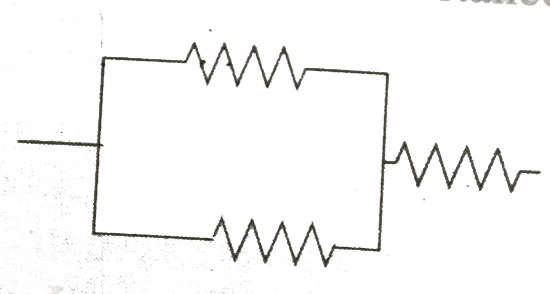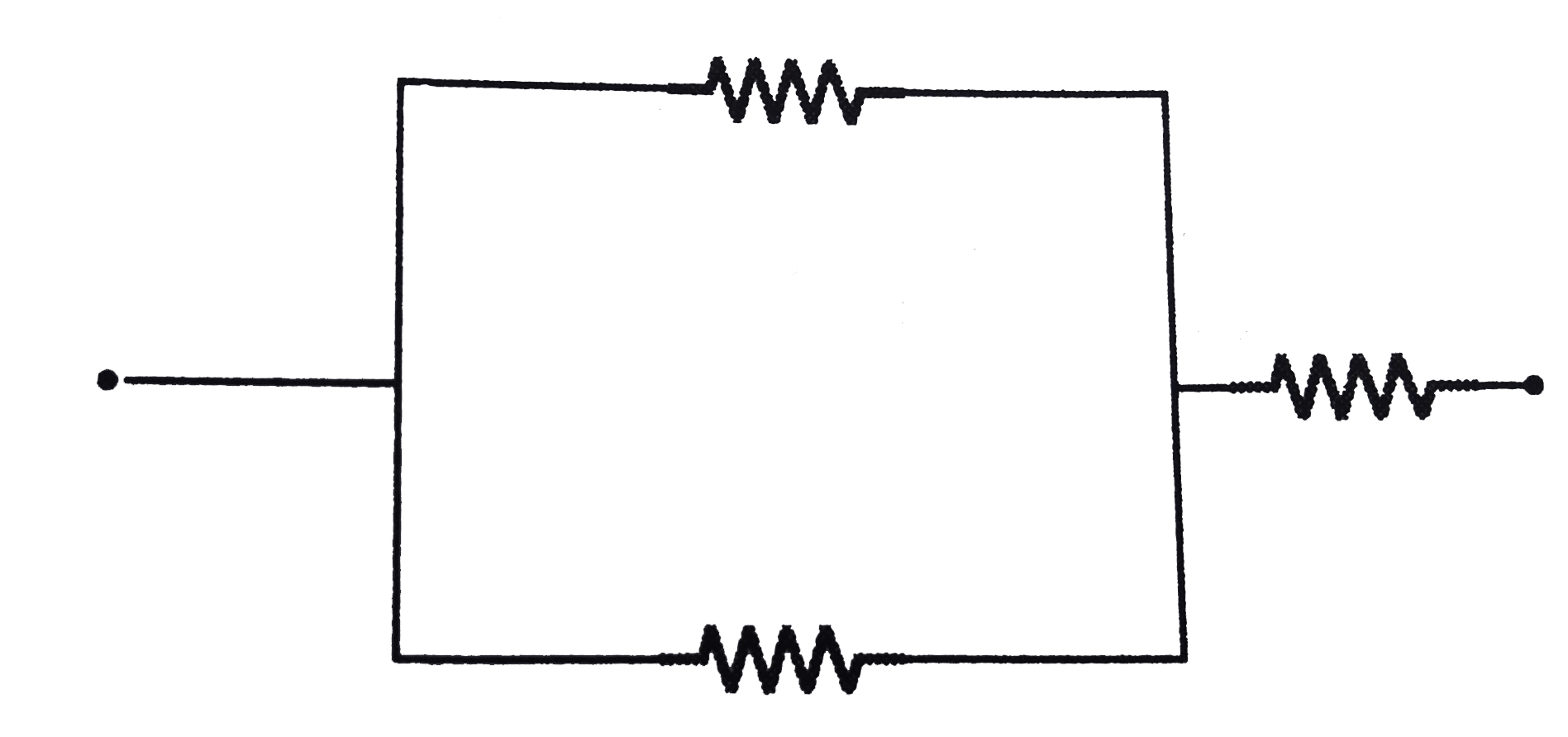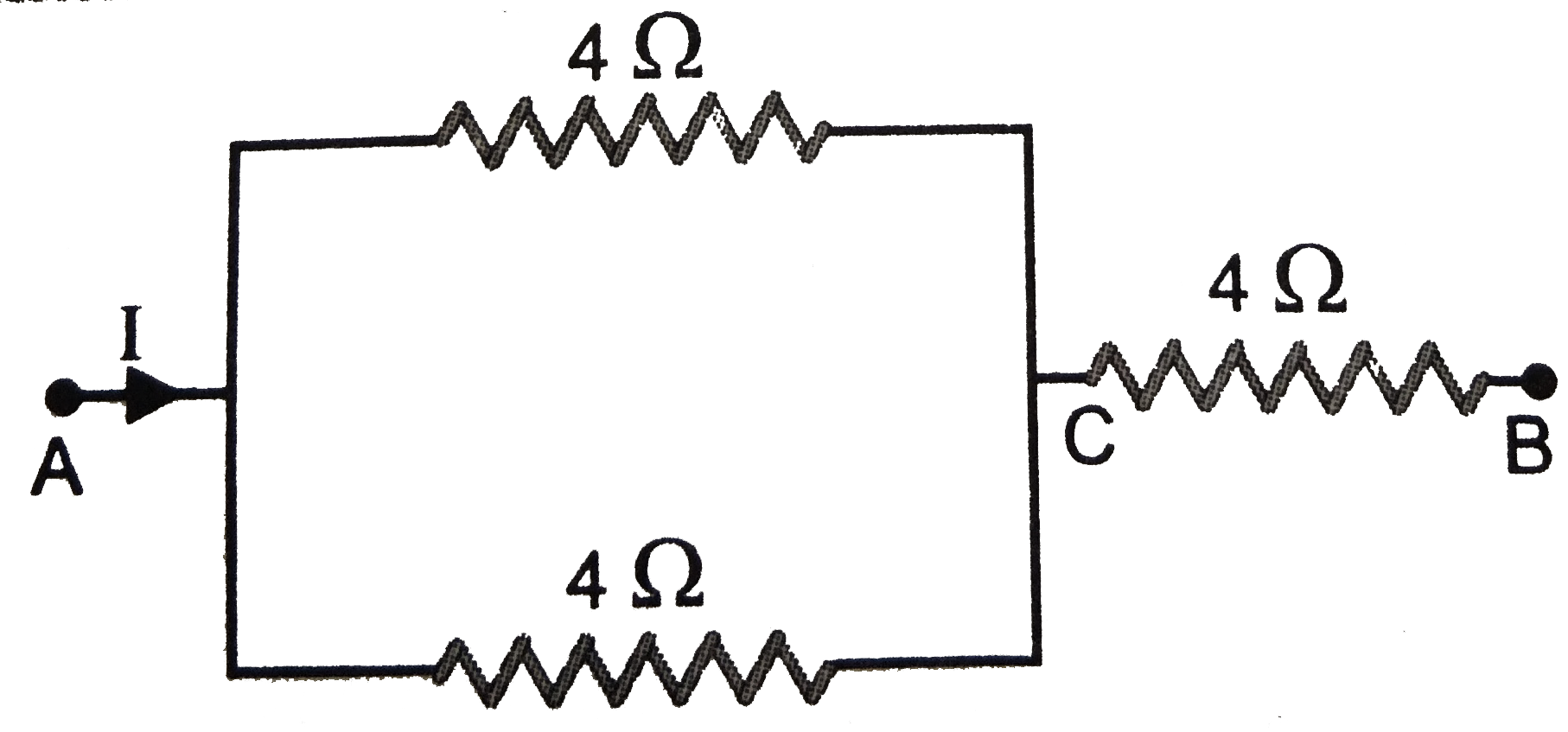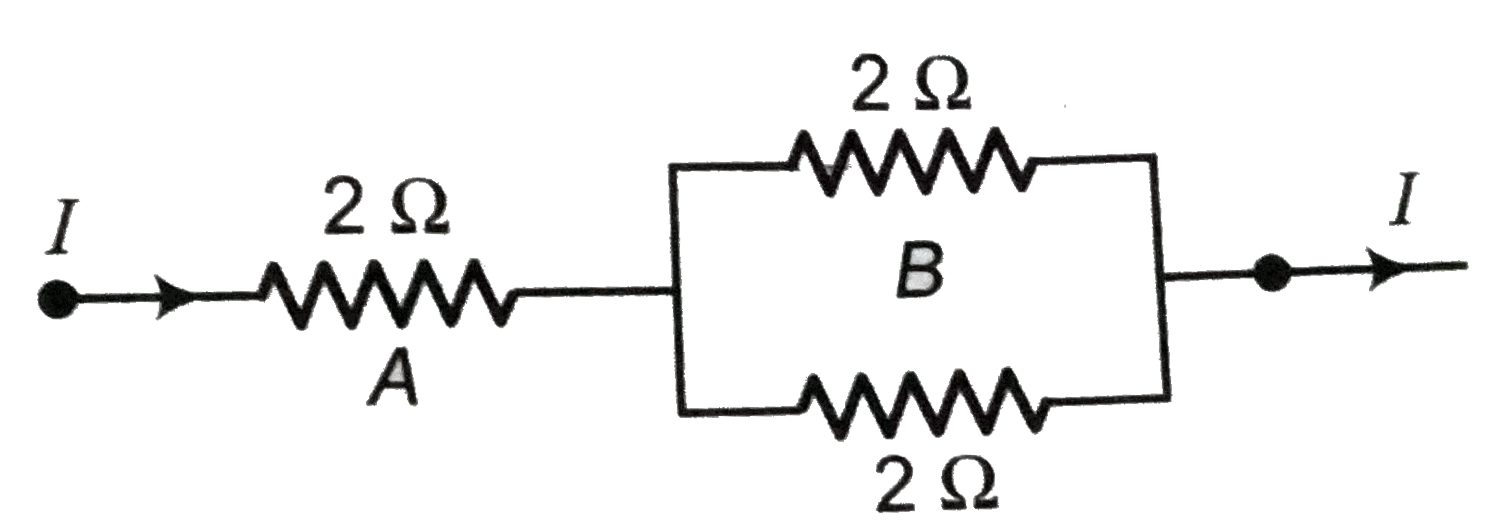Each of three resistors in fig. has a resistance of and can dissipate a maximum of without becoming excessively heated. Find the maximum power the circuit can dissipate.

Here .
Topper's Solved these Questions
- HEATING EFFECT OF CURRENTBook:CENGAGE PHYSICSChapter:HEATING EFFECT OF CURRENTExercise:Subjective
Explore 8 Videos
- HEATING EFFECT OF CURRENTBook:CENGAGE PHYSICSChapter:HEATING EFFECT OF CURRENTExercise:Single Correct
Explore 60 Videos
- HEATING EFFECT OF CURRENTBook:CENGAGE PHYSICSChapter:HEATING EFFECT OF CURRENTExercise:Solved Examples
Explore 13 Videos
- GRAVITATIONBook:CENGAGE PHYSICSChapter:GRAVITATIONExercise:Question Bank
Explore 39 Videos
- INDUCTANCEBook:CENGAGE PHYSICSChapter:INDUCTANCEExercise:Concept Based
Explore 9 Videos
Similar Questions
Each of three resistors in figure has a resistance of 2.4Ω and can dissipate a maximum of 36 W without becoming excessively heated. What is the maximum power the circuit can dissipate?

View SolutionThe resistance of each of the three wires joined as shown in figure is 4Ω and each one can have a maximum power of 20 watt (otherwise it will melt). What maximum power will the whole circuit dissipate ?

View Solution
Knowledge Check
An experiment is preformed to determine the I−V characteristics of a Zener diode, which has a protective resistance of R=100Ω, and maximum power of dissipation rating of 1 W. The minimum voltage range of the DC source in the circuit is :-
A0−24VB0−12VC0−8VD0.5VTwo wires have resistance of 2Ω and 4Ω connected to same voltage, ratio of heat dissipated at resistance is
A1:2B4:3C2:1D5:2
In the circuit shown in Fig.6.1, each of the three resistors of 4Ω can have a maximum power of 20W (otherwise it will melt). What maximum power can the whole circuit take?
View SolutionThree 2Ω resistors, A, B and C are connected as shown in figure. Each of them dissipates energy and can with stand a maximum power of 18 W without melting. Find the maximum current that can flow through the three resistors ?

View SolutionDraw a circuit diagram of an electric circuit containing a cell, a key, an ammeter, a resistance of 4Ω in series with a combination of two resistors (8Ω) in parallel and a voltmeter across the parallel combination. Each of them dissipate maximum energy and can withstand a maximum power of 16W without melting. Find the maximum current that can flow through the three resistors.
View SolutionDraw a circuit diagram of an electric circuit containing a cell, a key, an ammeter, a resistance of 4Ω in series with a combination of two resistors (8Ω) in parallel and a voltmeter across the parallel combination. Each of them dissipate maximum energy and can withstand a maximum power of 16W without melting. Find the maximum current that can flow through the three resistors.
View SolutionSuppose the circuit in Exercise 7.18 has a resistance of 15Ω Obtain the average power transferred to each element of the circuit, and the total power absorbed.
View SolutionIn the following figures, each of the three resistances, the rating of 24 W and resistance of 6Ω. Find the maximum power rating of the circuit.

View Solution